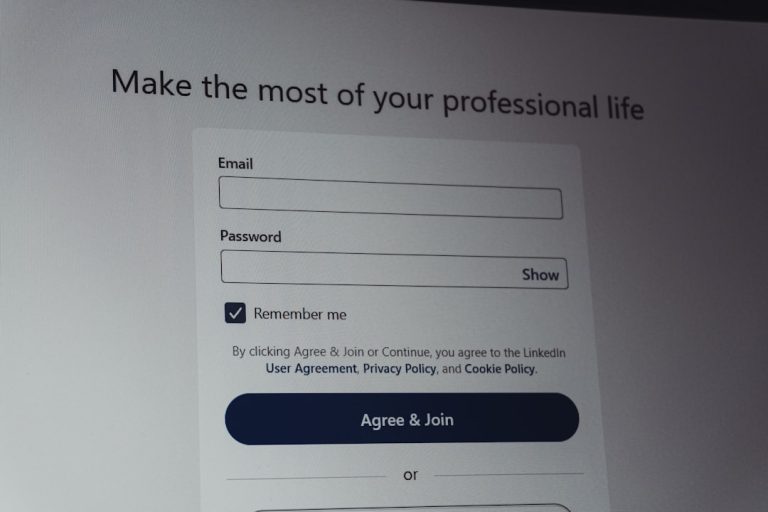In our hyper-connected world, the battle for focus is real. Every ping, notification, and tempting new tab is a siren call pulling us away from deep work and meaningful tasks. For years, I struggled with this constant digital tug-of-war. My productivity often felt like a leaky bucket, with precious minutes draining away into the vast ocean of social media feeds, news headlines, and endless rabbit holes. I tried willpower, self-discipline, even unplugging entirely – but the allure of instant gratification always seemed to win. That’s when I heard about the Freedom App, a tool promising to lock down distractions and reclaim my focus. My primary question, like many others, was simple: does it really block websites, or is it just another digital placebo?
My Initial Dive into the Digital Silence: Why Freedom Caught My Eye
My journey to discovering Freedom wasn’t born out of casual curiosity; it was a desperate plea for help from my own distracted brain. I’d finish a work session feeling exhausted but with little to show for it, realizing I’d spent more time switching tabs than actually working. The constant context-switching was brutal. I needed something more robust than just closing a browser tab; I needed a digital bouncer that wouldn’t let me back into the club of distractions, even if I begged.
What initially drew me to Freedom was its reputation as a serious, multi-device blocker. Unlike browser extensions that are easily disabled or only work on one platform, Freedom promised to synchronize across my laptop, phone, and tablet. This was crucial for me, as I often found myself escaping from my computer only to pick up my phone and fall down the same rabbit hole. The idea of scheduling blocks in advance also appealed to my desire for proactive planning rather than reactive willpower. I envisioned a world where, for set periods, my most addictive websites and apps would simply cease to exist for me. It sounded like a digital detox on demand, and I was ready to sign up.
Setting the Blockade: My First Sessions with Freedom’s Filters
Getting started with Freedom was surprisingly straightforward. After downloading the app on my MacBook, iPhone, and iPad, the setup process guided me through creating my first blocklist. This wasn’t just about blocking a few social media sites; I went all in. My list included Facebook, Twitter, Instagram, YouTube, Reddit, various news sites, and even a few online shopping destinations that often lured me in. Freedom also offers a “block all websites” option, which I considered for extreme focus sessions, but I decided to start with a custom list to allow access to necessary work-related resources.
The interface was clean and intuitive. I could select specific devices to block, create different blocklists for different scenarios (e.g., “Deep Work,” “Writing Focus,” “Weekend Digital Detox”), and schedule sessions. The scheduling feature became a game-changer. I set up recurring blocks for my core work hours, essentially pre-committing to focus before the day even began. It felt like building a digital fortress around my productivity, one scheduled session at a time. The initial activation was a moment of anticipation – would this really work, or would I find myself effortlessly bypassing its defenses?
The Moment of Truth: Did Freedom Truly Lock Down My Digital Escape Routes?
This is the million-dollar question, isn’t it? When a Freedom session was active, I braced myself for the inevitable urge to check “just one thing.” And it came. The muscle memory of typing “f-a-c-e…” into my browser bar was strong. But then, something different happened. Instead of my feed loading, I was greeted by a simple, polite message: “This site is blocked by Freedom.” It wasn’t a crashing error or a confusing page; it was a clear, unambiguous wall.

And yes, it really did block websites. Not just in one browser, but across all of them on my blocked device. I tried Safari, Chrome, Firefox – no dice. The block extended to related apps on my phone and tablet too. Trying to open the Instagram app during a session resulted in a similar block message or simply an inability to refresh the feed, depending on the app’s integration. The initial frustration quickly morphed into a strange sense of relief. The decision was taken out of my hands. The willpower I usually expended fighting off distractions could now be redirected towards my actual work.
What about loopholes? I tried a few. VPNs? Freedom blocks traffic at a lower system level, so a VPN typically won’t bypass it. Incognito mode? No difference. Changing DNS settings? Also ineffective. The only true “bypass” I found was to end the session prematurely, which Freedom makes a deliberate process. You have to confirm you want to end it, sometimes even waiting a few minutes depending on your settings (a feature called “Locked Mode” which I highly recommend). This friction is key; it gives you just enough time to reconsider if breaking your focus is truly worth it. The official Freedom App website provides more technical details on how their blocking mechanism works, but from a user perspective, it felt incredibly robust.
Beyond Just Blocking: Unpacking Freedom’s Impact on My Focus
While the technical effectiveness of Freedom in blocking websites was impressive, its true value extended far beyond mere digital gatekeeping. What I discovered was a profound shift in my mental landscape. When I knew certain sites were simply inaccessible, the *urge* to check them diminished over time. It wasn’t just about preventing access; it was about retraining my brain. The constant background noise of “what if I check Twitter?” or “what’s new on Reddit?” started to fade.
This newfound digital silence created space. Space for deeper thinking, for uninterrupted writing, for focusing on complex problems without the looming shadow of distraction. My sessions felt more productive, not just because I wasn’t wasting time, but because the *quality* of my focus improved dramatically. I found myself engaging more deeply with tasks, remembering details better, and experiencing fewer mental fatigue points throughout the day. It wasn’t a magic bullet for all my productivity woes, but it was an incredibly powerful accelerator. It helped me build better habits around my work, understanding that consistent, focused effort yields far greater results than sporadic, distracted bursts.
Navigating the Occasional Glitch and My Workarounds
No tool is perfect, and my experience with Freedom wasn’t entirely without its minor bumps. There were a couple of times when I genuinely needed to access a blocked site for a legitimate work reason during an active session – perhaps a research article or a specific client portal. In these instances, ending the session (especially with Locked Mode enabled) felt like a minor inconvenience. It forced a deliberate decision, which is its design, but occasionally it could be frustrating when time was of the essence.
My workaround for this evolved. Instead of a blanket block, I started refining my


